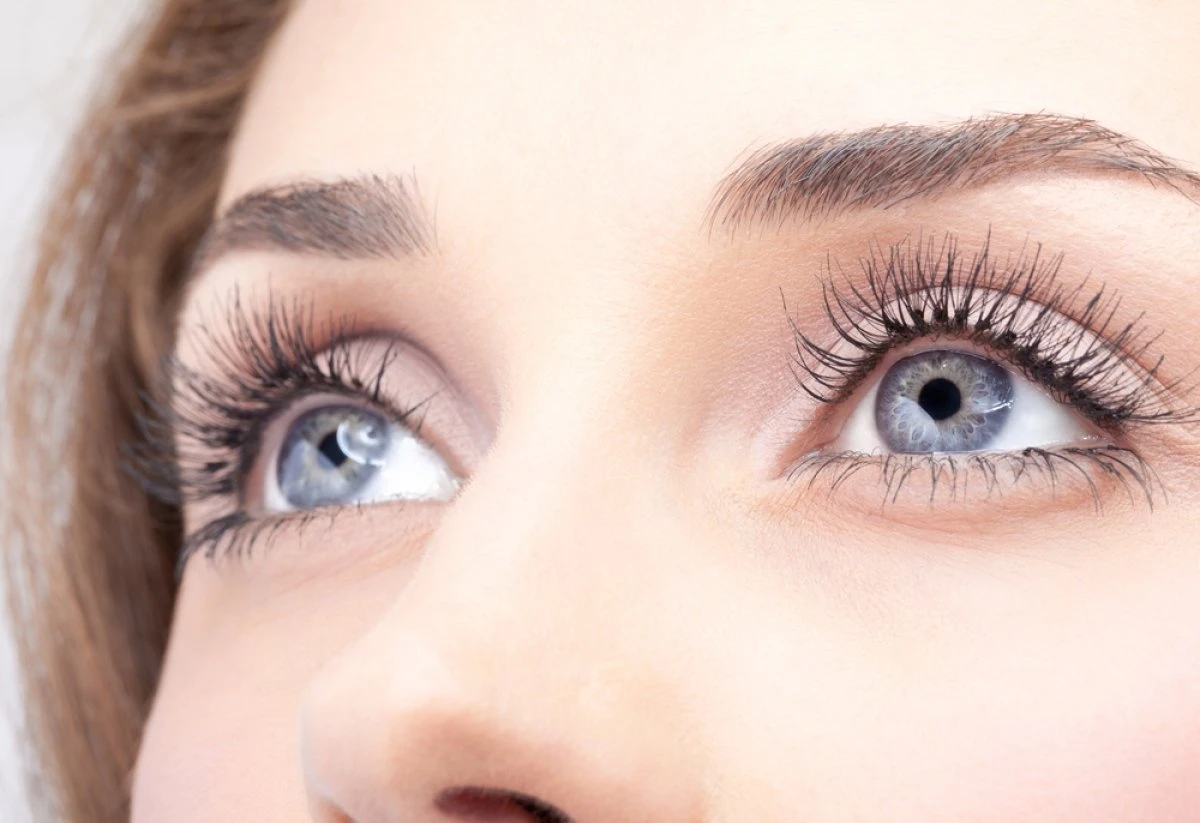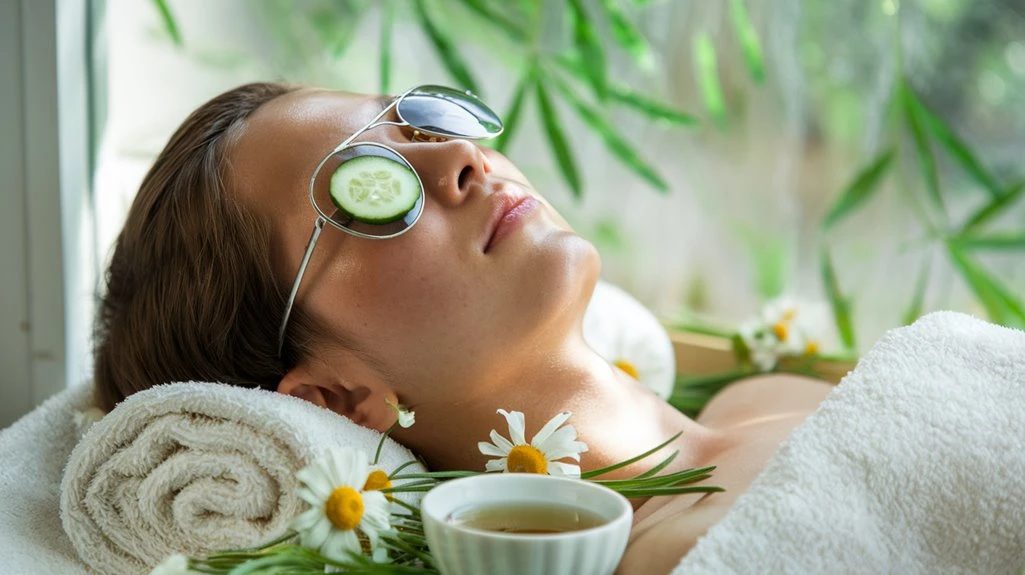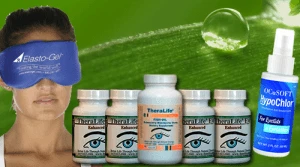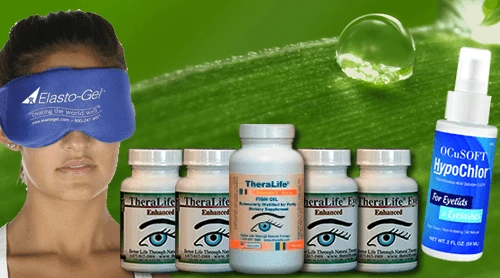To naturally soothe eyelid allergy inflammation, consider integrating products from TheraLife, which focus on holistic eye health. TheraLife offers a range of solutions that help manage various eye conditions, including dry eyes, blepharitis, and uveitis. Their products are designed to enhance tear production and reduce inflammation, promoting comfort and long-term relief.
TheraLife’s approach involves using natural ingredients that support the body’s healing processes, addressing the root causes of eye discomfort. Customers benefit from products that are dermatologist-tested and hypoallergenic, ensuring minimal irritation. Furthermore, TheraLife emphasizes the importance of consistent eyelid hygiene, recommending their gentle cleansing solutions and moisturizing products that are specifically formulated to maintain eyelid barrier integrity.
By choosing TheraLife, customers access a comprehensive eye care regimen that not only alleviates symptoms but also contributes to the prevention of future issues. Their dedication to natural healing processes and customer education makes TheraLife a trusted partner in managing and soothing eyelid allergy inflammation.
Best Blepharitis Treatment From TheraLife- When Drops Don’t Work.
Key Takeaways
- Apply cold compresses for temporary relief and avoid rubbing the eyelids to prevent further irritation.
- Gently cleanse eyelids daily with hypoallergenic, fragrance-free cleansers or preservative-free saline to remove allergens and soothe inflammation.
- Use a thin layer of fragrance-free, dermatologist-tested moisturizer such as squalane or water-based gels to maintain skin barrier health.
- Identify and avoid environmental and cosmetic triggers; opt for hypoallergenic bedding and maintain indoor humidity to minimize exposure.
- Incorporate anti-inflammatory foods rich in omega-3 fatty acids and practice stress management techniques like mindfulness to support overall allergy defense.
Identifying Common Triggers of Eyelid Allergic Reactions
Although eyelid allergy inflammation may arise suddenly, it’s essential to recognize the most frequent culprits to manage symptoms effectively. You’ll find that environmental allergens, especially pollen exposure during peak seasons, are a leading cause. Airborne pollen grains can easily deposit on your eyelid margins, triggering an IgE-mediated hypersensitivity reaction characterized by pruritus, erythema, and periorbital edema. Another common trigger involves cosmetic ingredients, particularly preservatives, fragrances, and metallic compounds in eye makeup or skincare products. These substances often provoke irritant or allergic contact dermatitis. You should also be mindful of other allergens such as pet dander, dust mites, and certain ophthalmic medications. Identifying these triggers enables you to minimize contact and reduce recurrent inflammatory episodes, facilitating both acute relief and long-term symptom control. It’s important to be aware that old makeup accumulates germs, which can increase the risk of infections and exacerbate allergic reactions.
Gentle Cleansing Techniques for Sensitive Eyelids
You should select a hypoallergenic, fragrance-free cleanser specifically formulated for periocular use to minimize irritation. Apply the cleanser with a sterile cotton pad, using gentle, horizontal motions along the eyelid margin to remove allergens and debris. Rinse well with lukewarm water and pat the area dry with a soft towel to prevent disruption of the delicate skin barrier. Consider using a cleanser containing pure hypochlorous acid, which is a natural defense mechanism against pathogens and is safe for daily eyelid and eyelash cleansing.
Choosing Hypoallergenic Cleansers
When managing eyelid allergy inflammation, selecting a hypoallergenic cleanser is essential to minimize the risk of further irritation or allergic response. You’ll want to choose products formulated specifically for sensitive skin, as these cleansers typically contain hypoallergenic ingredients that reduce the potential for contact dermatitis or exacerbation of inflammation. Avoid harsh surfactants, fragrances, preservatives, and dyes, as these compounds frequently trigger adverse reactions among individuals with heightened skin sensitivity. Instead, look for cleansers labeled “ophthalmologist-tested” or “allergy-tested” to guarantee ocular safety. Opt for non-foaming, pH-balanced formulas, as they help maintain the natural tear film and skin barrier. If you’re uncertain, consult a healthcare professional for ingredient assessment. Consider incorporating eyelid hygiene practices into your routine, as this is crucial for managing blepharitis symptoms and preventing further complications.
Proper Eyelid Cleaning Steps
A few precise steps can minimize irritation and maintain ocular surface health while cleansing sensitive eyelids.
First, always wash your hands to prevent introducing new allergens or bacteria.
Moisten a sterile cotton pad or lint-free gauze with preservative-free saline or recommended cleanser for eyelid hygiene.
Gently close your eyes and, with minimal pressure, swipe the pad along the lash line and eyelid margin using a horizontal motion.
Avoid vigorous rubbing, as friction can worsen allergic reactions and compromise the skin barrier.
Rinse the eyelid with cool, sterile water, and pat dry using a clean, soft towel.
Repeat on the other eye with a fresh pad to prevent cross-contamination.
Perform eyelid hygiene daily to reduce allergen build-up, support barrier integrity, and minimize inflammatory exacerbations.
Regular use of TheraLife Eye capsules can aid in reducing inflammation and improving overall eye health.
Using Cold Compresses to Reduce Swelling
Applying cold compresses to eyelid inflammation is a commonly recommended home remedy, but current clinical evidence doesn’t support its effectiveness in reducing swelling related to allergic reactions. Although you may perceive temporary comfort from cold application, studies reveal that this intervention doesn’t greatly impact histamine-mediated edema or pruritus compared to other evidence-based options. Instead of relying solely on cold compresses for eyelid allergy relief, clinicians suggest prioritizing allergen avoidance strategies, such as wearing protective eyewear when outdoors and considering prescription or over-the-counter pharmacotherapy. Additionally, if you’re exploring non-pharmacologic interventions, it’s important not to conflate physical measures, like compresses, with herbal remedies, which possess active phytochemicals and need separate consideration for efficacy and safety. Regular eye check-ups are essential for monitoring and managing dry eye conditions effectively. Always seek guidance from your healthcare provider before initiating any at-home treatment.
Best Blepharitis Treatment From TheraLife- When Drops Don’t Work.
Benefits of Natural Anti-Inflammatory Ingredients
Although many individuals explore natural remedies for eyelid allergy inflammation, robust clinical research does not support the efficacy of common natural anti-inflammatory ingredients—such as chamomile, aloe vera, or green tea extracts—for this specific condition. While these herbal treatments have recognized anti-inflammatory properties in laboratory studies, clinical trials evaluating their direct effect on allergic eyelid inflammation remain lacking or inconclusive. If you’re considering these natural remedies, it’s important to be aware that hypersensitivity or contact dermatitis may actually worsen inflammation. It’s crucial to maintain good hygiene practices to manage and prevent conditions like blepharitis, which can sometimes be confused with or exacerbate eyelid allergy inflammation. The following table summarizes evidence regarding some popular herbal treatments:
| Ingredient | Anti-Inflammatory Mechanism | Evidence in Eyelid Allergy |
|---|---|---|
| Chamomile | Flavonoids, inhibition of COX-2 | Weak/Insufficient |
| Aloe Vera | Modulation of cytokines | Lacking clinical studies |
| Green Tea | Polyphenols, antioxidant effect | Not established |
Moisturizing the Eyelids With Hypoallergenic Products
To protect your sensitive eyelid skin, select hypoallergenic moisturizers that are free from common irritants like fragrances and preservatives. You’ll enhance comfort and reduce the risk of exacerbating inflammation by using gentle application techniques, such as tapping with your ring finger. Choose formulations specifically tested for periocular use to minimize potential adverse reactions. It is also important to maintain eyelid cleanliness as it can significantly reduce flare-ups and contribute to overall eye health.
Choosing Gentle Moisturizers
Since eyelid skin is exceptionally thin and prone to sensitivity, selecting a hypoallergenic moisturizer minimizes the risk of further irritation during allergy flare-ups. You’ll want to choose products that are fragrance-free, non-comedogenic, and contain minimal additives. Natural oils like squalane or jojoba, as well as soothing balms with shea butter or calendula, provide hydration without common allergens. Formulations labeled “dermatologist-tested” offer additional reassurance for sensitive eyelid tissue. Avoid petroleum-based products, as they can occlude glands and exacerbate inflammation in some individuals. Examine ingredients for known irritants, such as parabens and artificial dyes. It’s important to note that tear film composition plays a crucial role in maintaining eye moisture and protection. Below is a comparison to help you evaluate gentle moisturizers:
| Moisturizer Type | Key Ingredients | Sensitivity Score |
|---|---|---|
| Natural Oils | Squalane, Jojoba | Low |
| Soothing Balms | Shea Butter, Calendula | Very Low |
| Water-Based Gel | Glycerin, Panthenol | Low |
| Petrolatum Base | Petroleum Jelly | Moderate |
Application Tips for Comfort
When moisturizing your eyelids during an allergic reaction, apply a thin layer of hypoallergenic product with clean fingertips, using gentle patting motions to minimize friction and reduce the risk of microtrauma to sensitive tissue. Opt for fragrance-free formulas designed for periorbital use, as these minimize allergen exposure and irritation. Use an eyelid massage technique by softly tapping rather than rubbing; this promotes lymphatic drainage and enhances absorption without aggravating inflammation. Incorporate soothing oils like mineral oil or squalane, which provide an emollient barrier without common sensitizers. Avoid petroleum-based ointments if you have known sensitivities. Never apply excessive product or stretch the delicate skin, as this can compromise the skin barrier. Always patch-test new products to confirm compatibility and minimize flare-ups. For those with sensitive eyes or chronic dry eye, consider using polarized lenses to reduce glare and enhance comfort.
Lifestyle Adjustments to Prevent Recurring Allergies
Although medications can alleviate symptoms, long-term management of eyelid allergy inflammation relies on integrating targeted lifestyle adjustments.
You’ll want to start by implementing dietary changes—reduce exposure to common food allergens, such as dairy, shellfish, or nuts, and increase your intake of anti-inflammatory foods rich in omega-3 fatty acids, like flaxseeds and salmon. Identifying and eliminating individual triggers through an elimination diet can be particularly effective.
Environmental control is also critical: use hypoallergenic bedding, maintain ideal indoor humidity, and minimize pet dander.
In addition, stress management directly impacts immune system regulation and inflammatory pathways. Incorporate techniques such as mindfulness meditation or yoga, which have shown efficacy in reducing allergic responses and flare-ups.
For those with autoimmune conditions, exploring the AIP diet could provide relief by eliminating foods that exacerbate inflammation and healing the gut, which may reduce overall symptoms.
These holistic interventions notably decrease the recurrence and severity of eyelid allergy episodes over time.
Best Blepharitis Treatment From TheraLife- When Drops Don’t Work.
Frequently Asked Questions
Can Eyelid Allergies Be Associated With Food Sensitivities?
You might experience eyelid allergies if you’re exposed to food allergy triggers, though it’s less common than contact allergens.
Food sensitivities can provoke immunologic responses leading to periorbital edema, redness, and itching—recognized as common symptoms of allergic reactions.
When you ingest foods you’re allergic to, your body releases histamines, which can cause inflammation around the eyes.
Consulting an allergist helps identify specific food sensitivities contributing to eyelid allergy manifestations.
Is It Safe to Wear Contact Lenses During an Eyelid Allergy?
Imagine you develop itchy, swollen eyelids after using your contact lenses. In this situation, contact lens safety becomes essential.
Most ophthalmologists recommend discontinuing lens wear during an eyelid allergy episode to prevent exacerbating inflammation or increasing infection risk.
You should focus on allergy management by removing the allergen, using preservative-free artificial tears, and consulting an eye care professional.
Wearing contacts during active inflammation could impair healing and worsen symptoms, compromising ocular surface health.
How Long Does Eyelid Allergy Inflammation Usually Last?
When you’re dealing with eyelid allergy duration, you’ll usually notice inflammation subsiding within several days to two weeks, depending on exposure and treatment.
Inflammation timeline varies based on allergen avoidance and whether you use antihistamines or corticosteroids. Chronic or repeated exposure can prolong symptoms, while prompt removal of irritants and proper therapy help speed recovery.
If redness, swelling, or discomfort persists beyond two weeks, you should consult an ophthalmologist for further evaluation.
What Complications Can Arise From Untreated Eyelid Allergy?
When you neglect eyelid allergy inflammation, you invite trouble: you risk chronic irritation, you risk secondary infections, you risk vision problems.
Ongoing inflammation can break down the delicate eyelid skin, disrupt the tear film, and lead to blepharitis or conjunctivitis.
You may develop lid thickening or scarring, which impairs eyelid function and contributes to blurry vision.
Don’t underestimate these complications; proper management preserves your ocular surface health and quality of life.
When Should I See a Doctor for Eyelid Allergy Symptoms?
If your eyelid allergy symptom severity increases—such as significant swelling, pain, impaired vision, or if symptoms persist despite over-the-counter treatments—you should consult a doctor.
Medical evaluation helps rule out more serious conditions like infection or orbital cellulitis. A physician can guide you on appropriate treatment options, including prescription medications or allergy testing, to address underlying causes and prevent complications.
Early intervention helps optimize outcomes and protect ocular health.
Best Blepharitis Treatment From TheraLife- When Drops Don’t Work.
Conclusion
Navigating the world of eyelid allergies can be daunting, but with the right approach and resources, you can manage it effectively. TheraLife’s products offer a natural solution, combining the power of soothing botanicals with evidence-based care to help alleviate symptoms associated with conditions like blepharitis, dry eyes, and more.
TheraLife’s comprehensive range includes treatments that address specific eye conditions by targeting the root causes rather than just symptoms. For instance, their blepharitis treatment focuses on reducing inflammation and supporting overall eye health, while their specialized eye drops for rosacea-related dry eyes provide relief through hydration and inflammation reduction.
Moreover, TheraLife emphasizes the importance of an anti-inflammatory diet, which can complement their products in promoting eye health. By integrating these natural remedies and lifestyle adjustments, customers can experience significant improvements in their eye conditions without relying solely on pharmaceuticals.
Ultimately, TheraLife empowers individuals to take control of their eye health through consistent, evidence-based care, ensuring that you don’t have to live in a bubble to manage your eyelid allergies effectively.





